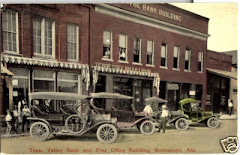Fair Use Rights for educational and news reporting, and criticism for wasting $14 billion dollars.
The big dark financial hole - YUCCA MOUNTAIN NUCLEAR WASTE REPOSITORY was it, is it the biggest financial scam in Department of Energy's history??
What is Yucca Mountain and why does a place warrant me calling Department of Energy, DOE, grossly negligent, wasteful, corrupt or a combination of all of the above? The following information is from
Power Magazine and Wikipedia, references are listed and have been reviewed, they are accurate. Fair Usage Rights for education and news reporting. Creative Commons License Reference
CC BY-SA 3.0
Power Magazine had this to say about DOE and Yucca Mountain regarding the NRC's position and finding either approving or disapproving of the nuclear waste repository: NRC statement: "Specifically, DOE has not acquired ownership or jurisdiction over the land where the geologic repository operations area would be located, and the land is not free of significant encumbrances such as mining rights, deeds, rights-of-way or other legal rights. DOE also has not acquired water rights it determined are needed to accomplish the purpose of the geologic repository operations area.” NRC quote - "The NRC staff finds that DOE has not met the requirements 10 CFR 63.121(a) and 10 CFR 63.121(d)(1) regarding ownership of land and water rights, respectively."
"NRC
in November 2013 directed staff to finish the long-delayed SER, the key technical document of the
NRC’s review of the Yucca Mountain application. It is to be published in five volumes."
"Volume 1 (General Information) was published in August 2010, and
Volume 3 (Repository Safety After Permanent Closure) was issued this October. Volume 2 (Repository Safety Before Permanent Closure) and Volume 5 (License Specifications) will be published by the end of January 2015, as they are completed, the NRC said."
"
Volume 4 (Administrative and Programmatic Requirements) of the five-part SER, documents the NRC staff’s evaluation to determine whether the DOE’s research and development, and performance confirmation programs, as well as other administrative controls, systems, and programs, meet applicable NRC requirements."
http://www.powermag.com/nrc-doe-does-not-meet-land-ownership-water-rights-requirements-for-yucca-mountain-site/
NRC Reference - "The NRC staff finds that DOE has not met the requirements 10 CFR 63.121(a) and 10 CFR 63.121(d)(1) regarding ownership of land and water rights, respectively."
http://www.nrc.gov/reading-rm/doc-collections/nuregs/staff/sr1949/v4/
Land ownership and control -
http://www.nrc.gov/reading-rm/doc-collections/cfr/part063/part063-0121.html
Reference court order - In August 2013, the
U.S. Court of Appeals for the District of Columbia ordered the
Nuclear Regulatory Commission to either "approve or reject the Energy Department's application for [the] never-completed waste storage site at Nevada's Yucca Mountain."
[77] From Wikipedia:
http://en.wikipedia.org/wiki/Yucca_Mountain_nuclear_waste_repository
MAP
"Arrogance of the Federal Government... handling of the project was wrong."
LESSONS LEARNED FROM YUCCA MOUNTAIN
Yucca Mountain nuclear waste repository
Spent nuclear fuel is the radioactive by-product of electric power generation at commercial nuclear power plants, and high-level radioactive waste is the by-product from reprocessing spent fuel to produce fissile material for nuclear weapons.[6] In 1982, the United States Congress established a national policy to solve the problem of nuclear waste disposal. This policy is a federal law called the Nuclear Waste Policy Act,[7] which made the U.S. Department of Energy responsible for finding a site, building, and operating an underground disposal facility called a geologic repository. The recommendation to use a geologic repository dates back to 1957 when the National Academy of Sciences recommended that the best means of protecting the environment and public health and safety would be to dispose of the waste in rock deep underground.[8]
The Department of Energy began studying Yucca Mountain in 1978 to determine whether it would be suitable for the nation's first long-term geologic repository for over 70,000 metric tons (69,000 long tons; 77,000 short tons) (150 million pounds) of spent nuclear fuel and high-level radioactive waste currently stored at 121 sites around the nation. An estimated 10,000 metric tons (9,800 long tons; 11,000 short tons) of the waste would be from America's military nuclear programs.[9] On December 19, 1984, the Department of Energy selected ten locations in six states for consideration as potential repository sites. This was based on data collected for nearly ten years. The ten sites were studied and results of these preliminary studies were reported in 1985. Based on these reports, President Ronald Reagan approved three sites for intensive scientific study called site characterization. The three sites were Hanford, Washington; Deaf Smith County, Texas; and Yucca Mountain. In 1987, Congress amended the Nuclear Waste Policy Act and directed DOE to study only Yucca Mountain, which is already located within a former nuclear test site. The Act provided that if during Site Characterization the Yucca Mountain location is found unsuitable, studies will be stopped immediately. This option expired when the site was actually recommended by the President. On July 23, 2002, President
George W. Bush signed House Joint Resolution 87,[10] (Pub.L. 107–200) allowing the DOE to take the next step in establishing a safe repository in which to store the country's nuclear waste. The Department of Energy was to begin accepting spent fuel at the Yucca Mountain Repository by January 31, 1998 but did not do so because of a series of delays due to legal challenges, concerns over how to transport nuclear waste to the facility, and political pressures resulting in underfunding of the construction.
On July 18, 2006 the DOE proposed March 31, 2017 as the date to open the facility and begin accepting waste based on full funding. On September 8, 2006 Ward (Edward) Sproat, a nuclear industry executive formerly of PECO energy in Pennsylvania, was nominated by President Bush to lead the Yucca Mountain Project. Following the 2006 mid-term Congressional elections, Democratic Nevada Senator Harry Reid, a longtime opponent of the repository, became the Senate Majority Leader, putting him in a position to greatly affect the future of the project. Reid has said that he would continue to work to block completion of the project, and is quoted as having said: "Yucca Mountain is dead. It'll never happen."[11]

(click on diagram for an expanded view)
Fair Use Rights, image is in the Public domain: Unless otherwise indicated, this information has been authored by an employee or employees of the University of California, operator of the Los Alamos National Laboratory under Contract No. W-7405-ENG-36 with the U.S. Department of Energy. The U.S. Government has rights to use, reproduce, and distribute this information. The public may copy and use this information without charge, provided that this Notice and any statement of authorship are reproduced on all copies. Neither the Government nor the University makes any warranty, express or implied, or assumes any liability or responsibility for the use of this information.
MASSIVE COSTS AND BUDGET PROBLEMS
In the 2008 Omnibus Spending Bill, the Yucca Mountain Project's budget was reduced to $390 million. Despite this cut in funding, the project was able to reallocate resources and delay transportation expenditures to complete the License Application for submission on June 3, 2008. Lacking an operating repository, however, the federal government owes to the utilities somewhere between $300 and $500 million per year in compensation for failing to comply with the contract it signed to take the spent nuclear fuel by 1998.[12]
During his 2008 presidential campaign, Barack Obama promised to abandon the Yucca Mountain project and as a result Senator Reid moved the Nevada primary to help Obama's campaign.[13] After his election, the Nuclear Regulatory Commission told Obama he did not have the ability to do so.[14] On April 23, 2009, Lindsey Graham (R-South Carolina) and eight other senators introduced legislation to provide "rebates" from a $30 billion federally managed fund into which nuclear power plants had been paying, so as to refund all collected funds if the project was in fact cancelled by Congress.[15]
In November 2013, in response to a lawsuit filed by the National Association of Regulatory Utility Commissioners (NARUC) and the Nuclear Energy Institute (NEI), the US Court of Appeals ruled that nuclear utilities may stop paying into the nuclear waste recovery fund until either the DOE follows the Nuclear Waste Policy Act which designates Yucca Mountain as the repository, or Congress changes the law.[16] The fee ended May 16, 2014.
In 2008, the U.S. Senate Committee on Environmental and Public Works found that failure to perform to contractual requirements could cost taxpayers up to $11 billion by 2020.[79] In 2013 this estimate of taxpayer liability was raised to $21 billion.[80] In July 2009, the House of Representatives voted 388 to 30 on amendments to HHR3183 (Roll call vote 591, via Clerk.House.gov) to not defund the Yucca Mountain repository in the FY2010 budget.[29][81] In 2013, the House of Representatives voted twice during the 2014 Energy and Water Appropriations debate by over 80% majority to reject elimination of Yucca Mountain as the nation's only nuclear waste solution.[82]
On April 13, 2010, the state of Washington filed suit to prevent the closing of Yucca Mountain, since this would slow efforts to clean up Hanford Nuclear Reservation.[83] South Carolina, Aiken County (the location of Savannah River site) and others joined Washington.[84] The United States Court of Appeals for the District of Columbia Circuit dismissed the suit in July 2011, saying the Nuclear Regulatory Commission had not ruled on the withdrawal of the license application.[85] Washington and South Carolina filed another lawsuit on July 29.[86]
With $32 billion received from power companies to fund the project, and $12 billion spent to study and build it, the federal government had $27 billion left, including interest. In March 2012, Senator Lindsey Graham introduced a bill requiring three-fourths of that money to be given back to customers, and the remainder to the companies for storage improvements.[87]
In August 2013, the U.S. Court of Appeals for the District of Columbia ordered the Nuclear Regulatory Commission to either "approve or reject the Energy Department's application for [the] never-completed waste storage site at Nevada's Yucca Mountain."[77] The court opinion said that the NRC was "simply flouting the law" in its previous action to allow the Obama administration to continue plans to close the proposed waste site since a federal law designating Yucca Mountain as the nation's nuclear waste repository remains in effect. The court opinion stated that "The president may not decline to follow a statutory mandate or prohibition simply because of policy objections."[77]
UNETHICAL CONDUCT - (official government document, Fair Use) Department of Energy: Unethical Conduct at DOE's Yucca Mountain Project (Letter Report, 09/30/96, GAO/OSI-96-2). Pursuant to a congressional request, GAO investigated allegations of conflicts of interest at the Department of Energy's (DOE) Yucca Mountain Project, focusing on whether: (1) the DOE Office of Civilian Radioactive Waste Management (OCRWM) properly implemented and adequately enforced federal standards of ethical conduct and DOE ethics regulations; and (2) failure to implement DOE ethics standards may have contributed to contract award and management abuses.
GAO found that: (1) the two most senior DOE officials on the project, as well as 14 other DOE employees, had personal relationships with employees of Science Applications International Corporation (SAIC), the project's largest single contractor; (2) the relationships of the two senior officials were in violation of an executive order and DOE regulations because they created at least the appearance of a loss of impartiality; (3) although in some cases OCRWM and other project officials knew for years that potential ethical problems existed at the project, they did not take formal action until 1993, when OCRWM issued a memorandum about federal-contractor employee relationships, provided ethics training, and determined whether DOE employees in such relationships required a recusal or waiver to ensure impartiality; and (4) one of the senior officials also acted questionably in terms of presenting his own positions about the project to Congress without management approval, influencing the hiring of a subcontractor, opposing a contract that would have reduced SAIC work, and inappropriately lobbying Congress and attending congressional meetings with the contractor.
GAO REPORT ON UNETHICAL CONDUCT - YUCCA MOUTAIN
SUMMARY
A failure to acquire land usage rights and/or ownership rights, including water rights represents unbelievable ignorance or negligence, maybe both, as displayed by Department of Energy's actions regarding the Yucca Mountain Project. This incident, coupled with recent security failures and leaks in Department of Energy storage facilities represents negligent conduct on the part of agency managers, These facts bring into question whether this agency should be handling nuclear materials, much less managing programs involving nuclear materials. There appear to be serious leadership problems within Department of Energy.
After all the work, billions of dollars spent, the DOE does not own the land or have usage rights of the land; therefore, the NRC should not issue a license to operate the Yucca Mountain Nuclear Waste Depository facility.
This question must be asked - was this project designed to fail and only reap benefits for contractors?












